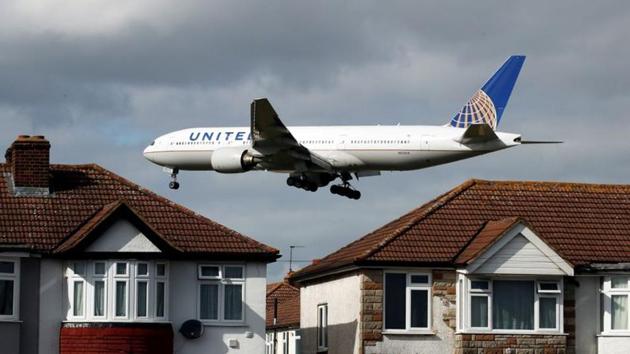Fall in Heathrow airport traffic due to Covid-19 crisis may create ‘ghost towns’
Crisis in aviation industry due to pandemic will badly hit West London suburbs such as Southall, Hounslow, Slough and Hillingdon near Heathrow, which have large Indian-origin populations.
West London suburbs such as Southall, Hounslow, Slough and Hillingdon with large population of Indian origin people face the prospect of becoming ‘ghost towns’ due to the coronavirus pandemic severely impacting the Heathrow airport and the aviation industry, MPs and industry leaders say.

Senior Labour MP Virendra Sharma (Ealing Southall) agreed on Thursday with Heathrow chief executive John Holland-Kaye that areas around the airport risk the fate of mining towns in north England that saw much poverty and deprivation when the coal industry was largely shut down by the Margaret Thatcher government amidst strikes in the 1980s.
He said: “Areas around Heathrow will become ghost towns if no urgent measures are taken. Tens of thousands of people, many of Indian and Asian origin who have worked in Heathrow-linked roles directly or indirectly for at least three generations, have lost jobs”.
“This is not scare-mongering. This government does not have a seriously thought-out plan to deal with the crisis not only in Heathrow but also other airports such as Gatwick. I and over 25 MPs wrote to chancellor Rishi Sunak about this in July,” he added.
Sharma said he was already seeing the impact of Heathrow-linked job losses in his constituency. In Hounslow alone, the council estimates that at least 11,000 residents are employed at Heathrow, while up to 27,000 jobs in the borough are said to be linked to the airport.
According to Holland-Kaye, the collapse of air traffic has put at risk tens of thousands of jobs. He wants the Boris Johnson government to allow testing at airports so that traffic could begin to return to 2019 levels and enable the crippled aviation industry to slowly recover.
Heathrow estimates that it has suffered a loss of £1.1 billion in the first half of 2020 due to the pandemic.
The Hounslow council said: “Independent research carried out by Oxford Economics forecasts the borough will be the second hardest hit in London, with a possible 40 per cent decline in output and thousands of jobs likely to be lost”.
“A major factor is its proximity to Heathrow Airport and strong links to the aviation industry”, it added.
Tens of thousands of people living in neighbouring boroughs are employed in four types of economic activity supported by Heathrow
Direct on-airport: Located at Heathrow and includes roles such as management of airport, pilots, air traffic control, retail, catering, cleaning, security
Direct off-airport: Located mainly in close proximity to Heathrow, these jobs are reliant on the airport and include hotels, distribution and logistics activities
Indirect and induced: Activity generated through supply chain spending and consumer spending.
Catalytic: Companies are located in Heathrow because of the presence of the airport, typically to access international markets that the hub airport services.
Economic forecasting and analysis organisation Oxford Economics said in a recent report titled ‘The economic impact of reduced activity at Heathrow’ that the airport is a key source of employment for people in neighbouring boroughs.
It said: “The airport supports employment through four main channels of activity. However, the dramatic fall in passenger numbers and cargo at the airport threatens the security of many of the direct jobs located at Heathrow and surrounding it, as well as those in supply chains and subsequently those supported through the spending of wages”.
“It could also impact on businesses that have located around the airport because of the international destinations it serves”.






